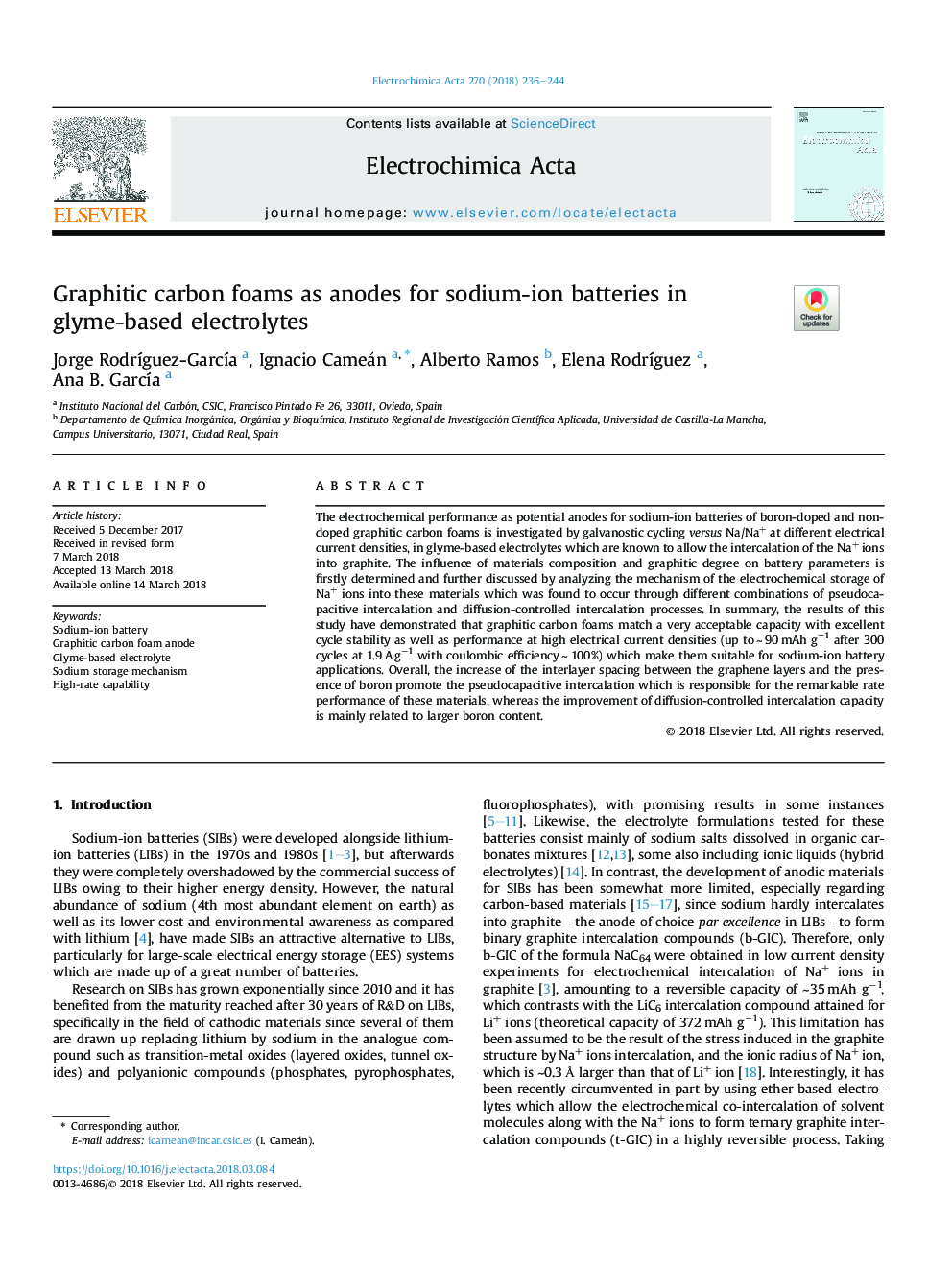| Article ID | Journal | Published Year | Pages | File Type |
|---|---|---|---|---|
| 6603428 | Electrochimica Acta | 2018 | 9 Pages |
Abstract
The electrochemical performance as potential anodes for sodium-ion batteries of boron-doped and non-doped graphitic carbon foams is investigated by galvanostic cycling versus Na/Na+ at different electrical current densities, in glyme-based electrolytes which are known to allow the intercalation of the Na+ ions into graphite. The influence of materials composition and graphitic degree on battery parameters is firstly determined and further discussed by analyzing the mechanism of the electrochemical storage of Na+ ions into these materials which was found to occur through different combinations of pseudocapacitive intercalation and diffusion-controlled intercalation processes. In summary, the results of this study have demonstrated that graphitic carbon foams match a very acceptable capacity with excellent cycle stability as well as performance at high electrical current densities (up toâ¯â¼â¯90â¯mAh gâ1 after 300 cycles at 1.9â¯Aâ¯gâ1 with coulombic efficiencyâ¯â¼â¯100%) which make them suitable for sodium-ion battery applications. Overall, the increase of the interlayer spacing between the graphene layers and the presence of boron promote the pseudocapacitive intercalation which is responsible for the remarkable rate performance of these materials, whereas the improvement of diffusion-controlled intercalation capacity is mainly related to larger boron content.
Related Topics
Physical Sciences and Engineering
Chemical Engineering
Chemical Engineering (General)
Authors
Jorge RodrÃguez-GarcÃa, Ignacio Cameán, Alberto Ramos, Elena RodrÃguez, Ana B. GarcÃa,
